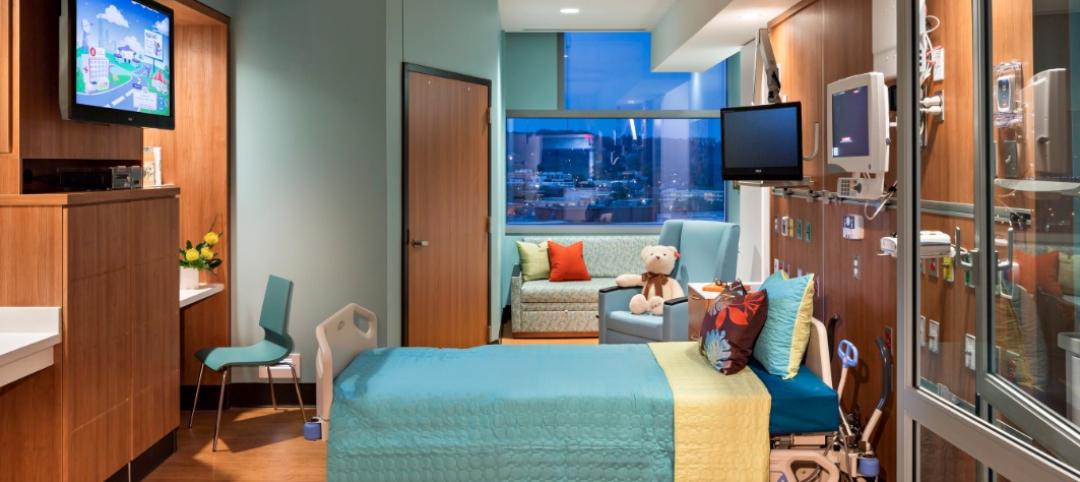The American Institute of Architects (AIA) has selected the recipients of the AIA National Healthcare Design Awards program, a showcase of the best healthcare building design and healthcare design-oriented research. Projects exhibit conceptual strengths that solve aesthetic, civic, urban, and social concerns as well as the requisite functional and sustainability concerns of a hospital.
Recipients were selected in four categories:
Category A: Built, Less than $25 million in construction cost
Category B: Built, More than $25 million in construction cost
Category C: Unbuilt, Must be commissioned for compensation by a client with the authority and intention to build
Category D: Innovations in Planning and Design Research, Built and Unbuilt
Jurors for the 2015 National Healthcare Design Awards include: Scott Habjan, AIA(Chair), SOM; Michael Folonis, FAIA, Michael W. Folonis Architects; Charles H. Griffin, AIA, WHR Architects, Inc.; Elizabeth Mahon, AIA, Ballinger; Marc Marchant, AIA, LS3P Associates LTD.; Connie McFarland, FAIA, McFarland Architects and Joseph Strauss, AIA, Cleveland Clinic (this juror was recused from the review of the Cleveland Clinic, Brunswick Family Health Center Emergency Department project).
Category A
Providence Sacred Heart Medical Center Pediatric Emergency Department; Spokane, WA
Mahlum

The building’s red panels are meant to be easily recognizable on the medical campus, while an atrium accented by wood welcomes visitors and calms patients. The Kid’s Club overlooks a healing garden, providing views for patients and their families. Advanced medical care is delivered via central care team zones close to patient care areas. More info here.
Cleveland Clinic, Brunswick Family Health Center Emergency Department
Westlake Reed Leskosky
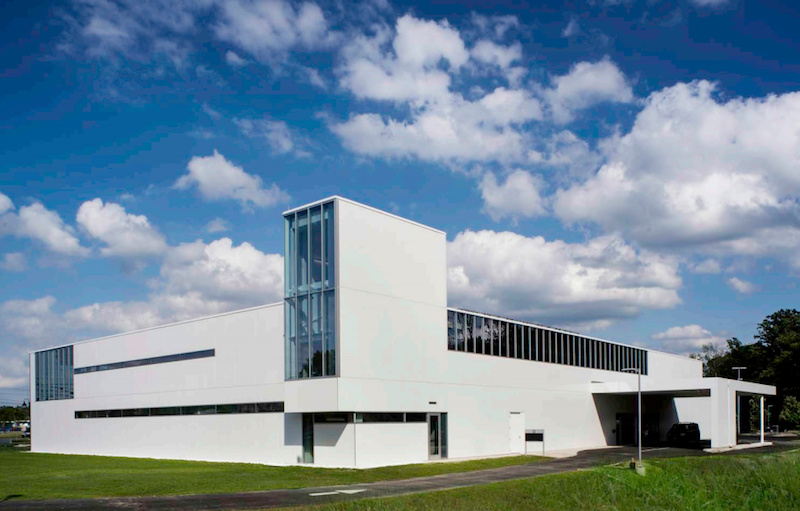
This addition to the Cleveland Clinic Brunswick Family Health Center provides a new 22,500 sf emergency department at grade, a processing lab, an imaging center, a second story expansion space of 17,000 sf intended for future fitout as exam rooms and offices and a roof top heliport. The addition is compatible with the original structure but easily identifiable as a new component. More info here.
New York Hospital Queens Astoria Primary Care Clinic; Queens, New York
Michielli + Wyetzner Architects
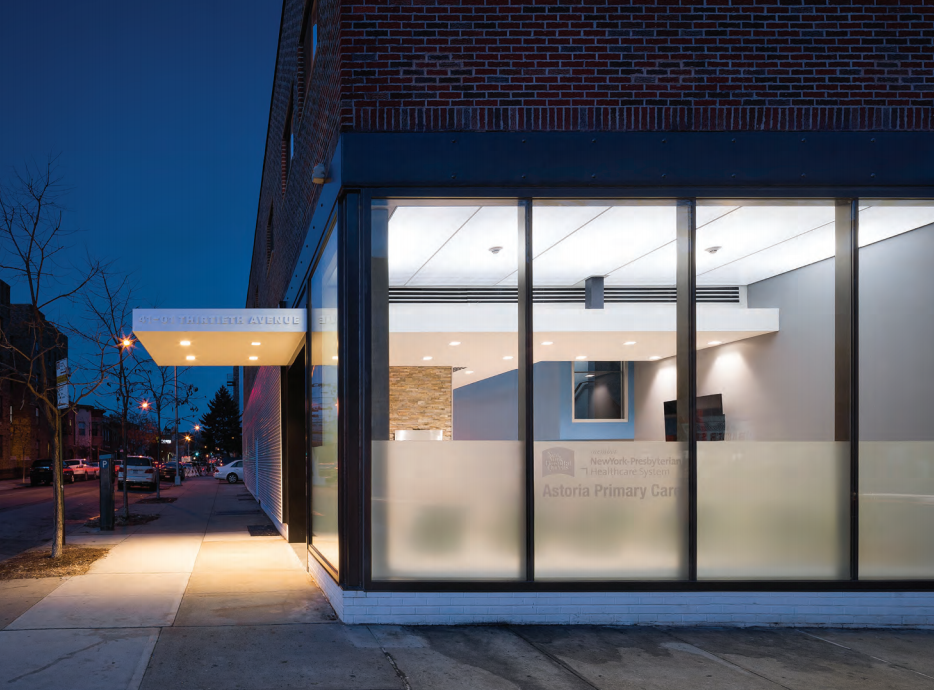
Located in Astoria on a corner site, the two-story brick building was gutted for new exam and consultation rooms. A perforated metal screen masks the irregular pattern of existing windows on the ground floor, allowing daylight to enter during the day and artificial light to glow at night. An illuminated ceiling is visible through the full height glass. The natural light and select use of color make is meant to soothe patients. More info here.
Vitenas Cosmetic Surgery and Mirror Mirror Beauty Boutique; Houston
Harrell Architects, LP

This ambulatory surgery center is squeezed into a redeveloped 19,100-sf site. The exterior is clad in white metal panels, corrugated zinc panels, and white plaster, alond with a two story corner window wall. The interiors have a sleek design with minimal color and crisp detailing. A variety of textures were introduced via the flooring, custom wall panels, and drapery. More info here.
Category B
Bridgepoint Active Healthcare; Toronto
Planning, Design and Compliance Architects: Stantec Architecture / KPMB Architects
Design, Build, Finance and Maintain Architects: HDR Architecture / Diamond Schmitt Architects
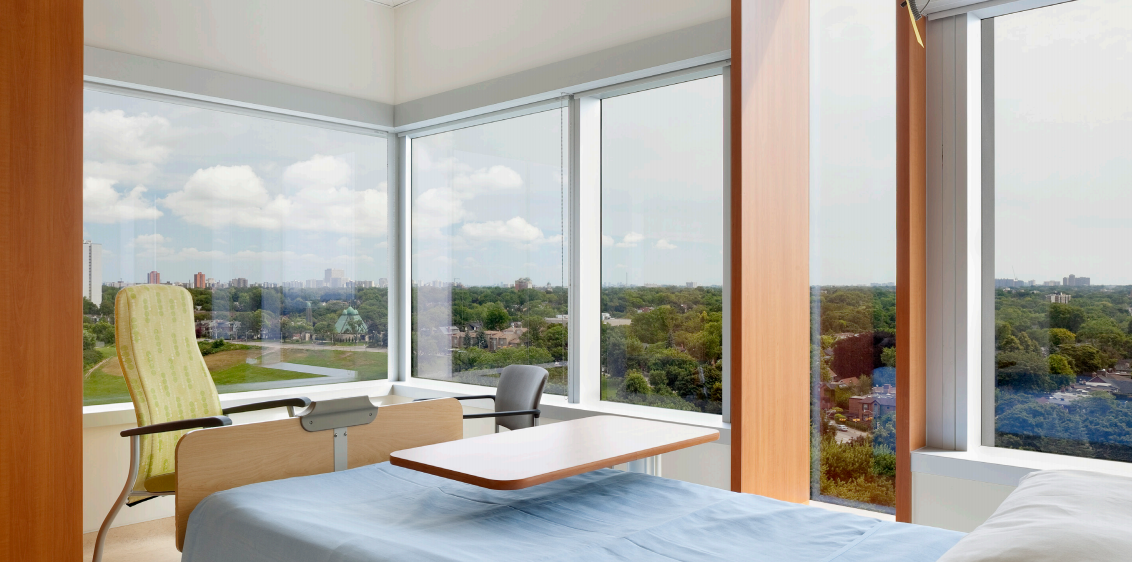
Bridgepoint Active Healthcare is designed for those coping with complex chronic disease. The nature-inspired space is designed to connect with a person’s sense of physical and emotional well-being. Panoramic views are in every patient room and open terraces are on the roof. The building facade has a randomized pattern of 472 vertical window projections, each representing a patient, for a personalized feel. More info here.
Category C
Fifth XiangYa Hospital; Changsha, China
Payette

Located in ChangSha, China in the Tianxian district, the Fifth XiangYa Hospital is slated to anchor the developing community next to Xianguling Park. The hospital has 2,500 beds, and each half of the campus is organized around a central concourse, along which all the clinical functions are organized. The inpatient towers hover above it. Two levels of service functions and parking operate below ground. More info here.
U.S. Department of Veterans Affairs, Robley Rex VA Replacement Medical Center and VBO Office Building; Louisville, Kentucky
URS/SmithGroup Joint Venture
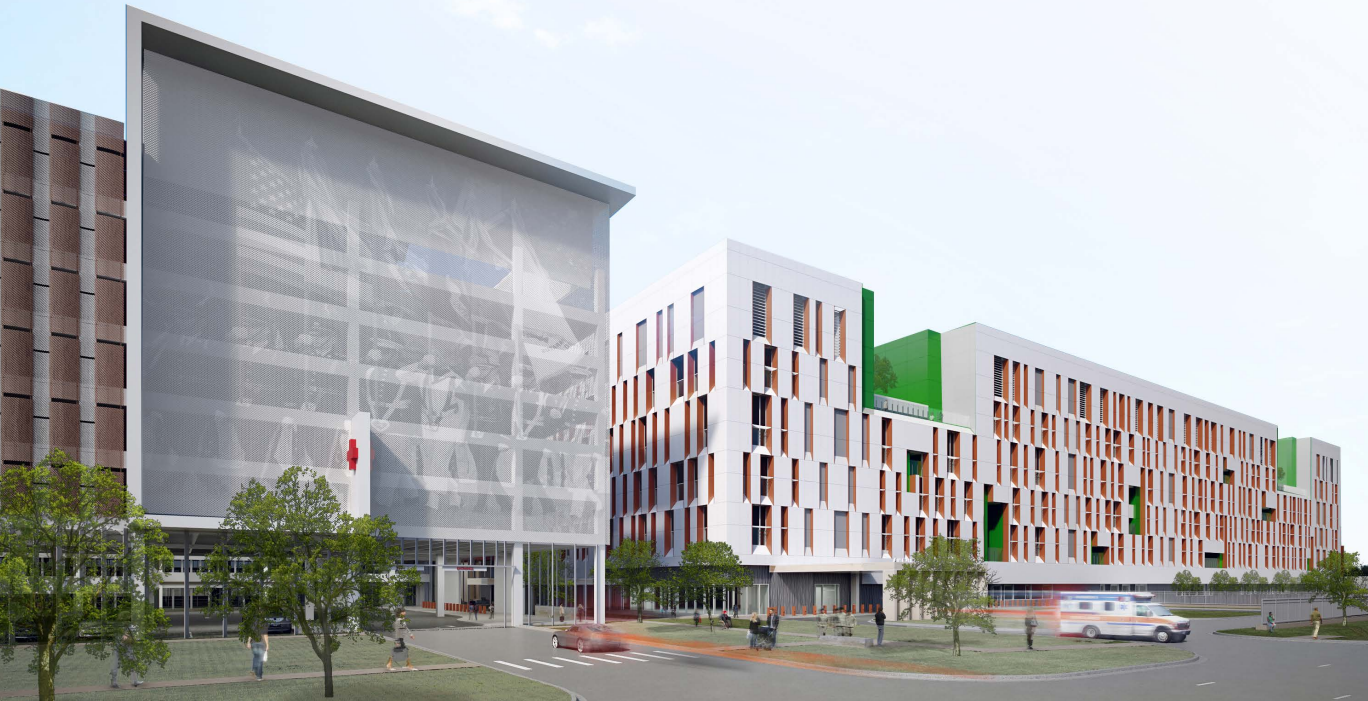
Patients and families at the Robley Rex VA Medical Center will find comfort in a light-filled concourse, quiet air gardens, and elevated courtyards. The settings' moods can range from contemplation to celebration. Designed as a full replacement of the existing facility, the facility is planned for one million sf of inpatient and outpatient services and 104 beds. More info here.
Category D
Studio Dental Mobile Unit
Montalba Architects, Inc.
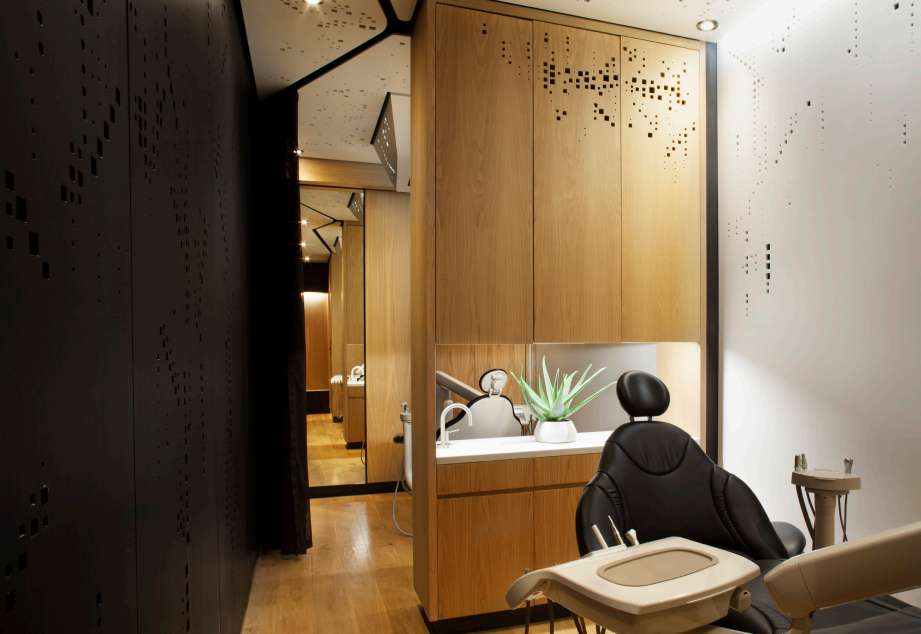
Montalba Architects Inc.’s wanted to create a spacious interior while accommodating Studio Dental’s Mobile Unit, which is a traveling dentistry program. The 26-foot-long trailer with 230 interior sf features a waiting area, sterilization room, and two operatories. The sterilization room is hidden behind millwork panels that wrap around to form the patient waiting bench. A centralized, double-sided millwork panel houses equipment for both operatories. More info here.
Related Stories
| Aug 26, 2013
13 must-attend continuing education sessions at BUILDINGChicago
Building Design+Construction's new conference and expo, BUILDINGChicago, kicks off in two weeks. The three-day event will feature more than 65 AIA CES and GBCI accredited sessions, on everything from building information modeling and post-occupancy evaluations to net-zero projects and LEED training. Here are 13 sessions I'm planning to attend.
| Aug 22, 2013
Energy-efficient glazing technology [AIA Course]
This course discuses the latest technological advances in glazing, which make possible ever more efficient enclosures with ever greater glazed area.
| Aug 14, 2013
Green Building Report [2013 Giants 300 Report]
Building Design+Construction's rankings of the nation's largest green design and construction firms.
| Jul 30, 2013
Better planning and delivery sought for VA healthcare facilities
Making Veterans Administration healthcare projects “better planned, better delivered” is the new goal of the VA’s Office of Construction and Facilities Management.
| Jul 30, 2013
Healthcare designers get an earful about controlling medical costs
At the current pace, in 2020 the U.S. will spend $4.2 trillion a year on healthcare; unchecked, waste would hit $1.2 trillion. Yet “waste” is keeping a lot of poorly performing hospitals in business, said healthcare facility experts at the recent American College of Healthcare Architects/AIA Academy of Architecture for Health Summer Leadership Summit in Chicago.
| Jul 30, 2013
Healthcare designers and builders, beware: the ‘Obamacare’ clock is ticking down to midnight [2013 Giants 300 Report]
Hard to believe, but we’re only six months away from when the Affordable Care Act will usher in a radical transformation of the American healthcare system. Healthcare operators are scrambling to decipher what the new law will mean to their bottom lines and capital facility budgets.
| Jul 30, 2013
Top Healthcare Sector Construction Firms [2013 Giants 300 Report]
Turner, McCarthy, Clark Group top Building Design+Construction's 2013 ranking of the largest healthcare contractors and construction management firms in the U.S.
| Jul 30, 2013
Top Healthcare Sector Engineering Firms [2013 Giants 300 Report]
AECOM, Jacobs, URS top Building Design+Construction's 2013 ranking of the largest healthcare engineering and engineering/architecture firms in the U.S.
| Jul 29, 2013
2013 Giants 300 Report
The editors of Building Design+Construction magazine present the findings of the annual Giants 300 Report, which ranks the leading firms in the AEC industry.
| Jul 23, 2013
Tell us how you're reimagining the medical office building
"Obamacare" implementation will add thousands of people to the ranks of the insured, including many who formerly sought primary care in emergency rooms. Now, these patients will have coverage that allows them to more easily access the typical treatment channels—and that means greater demand for services provided in medical office buildings.










